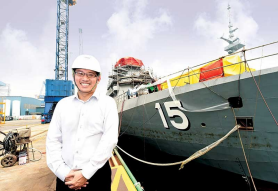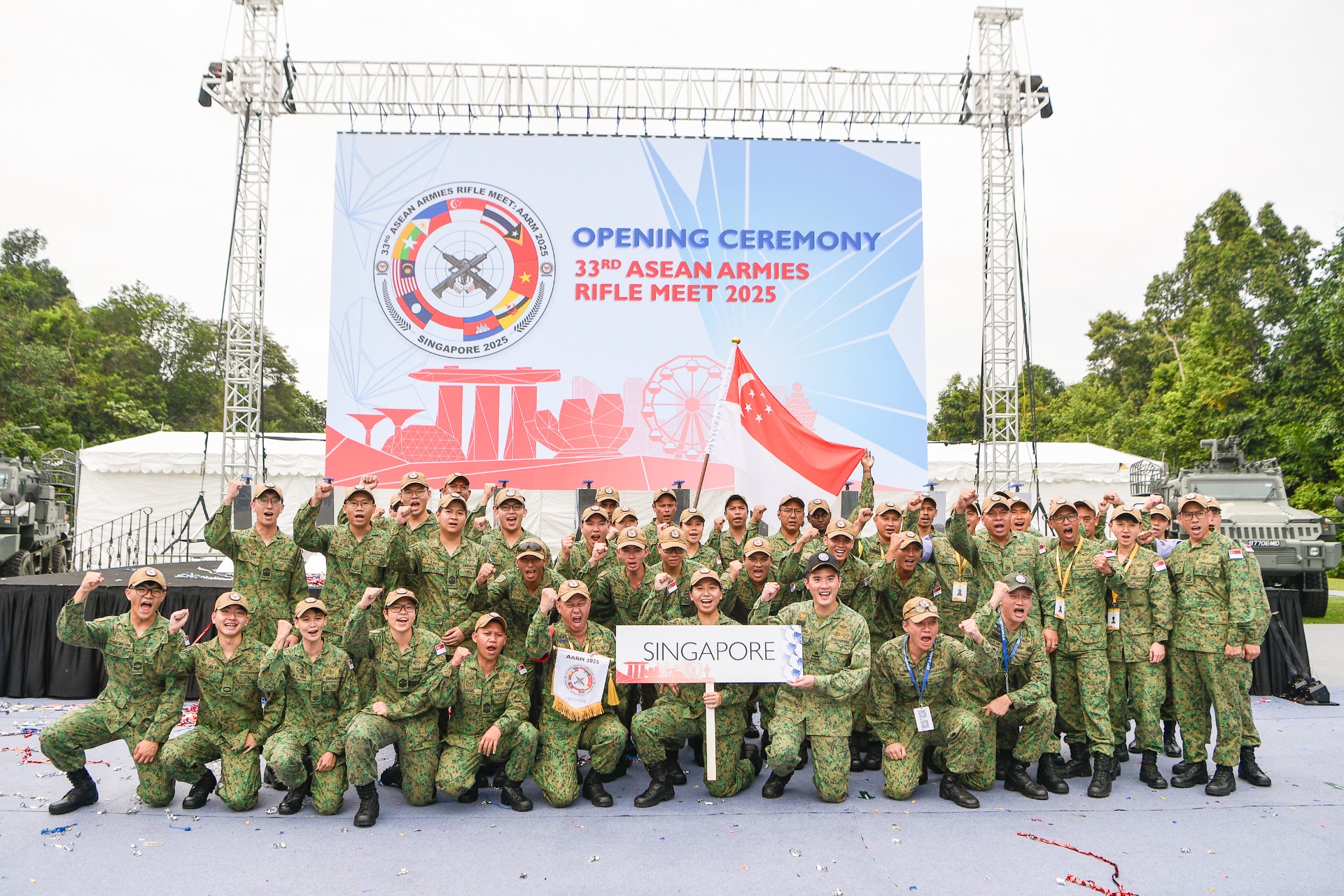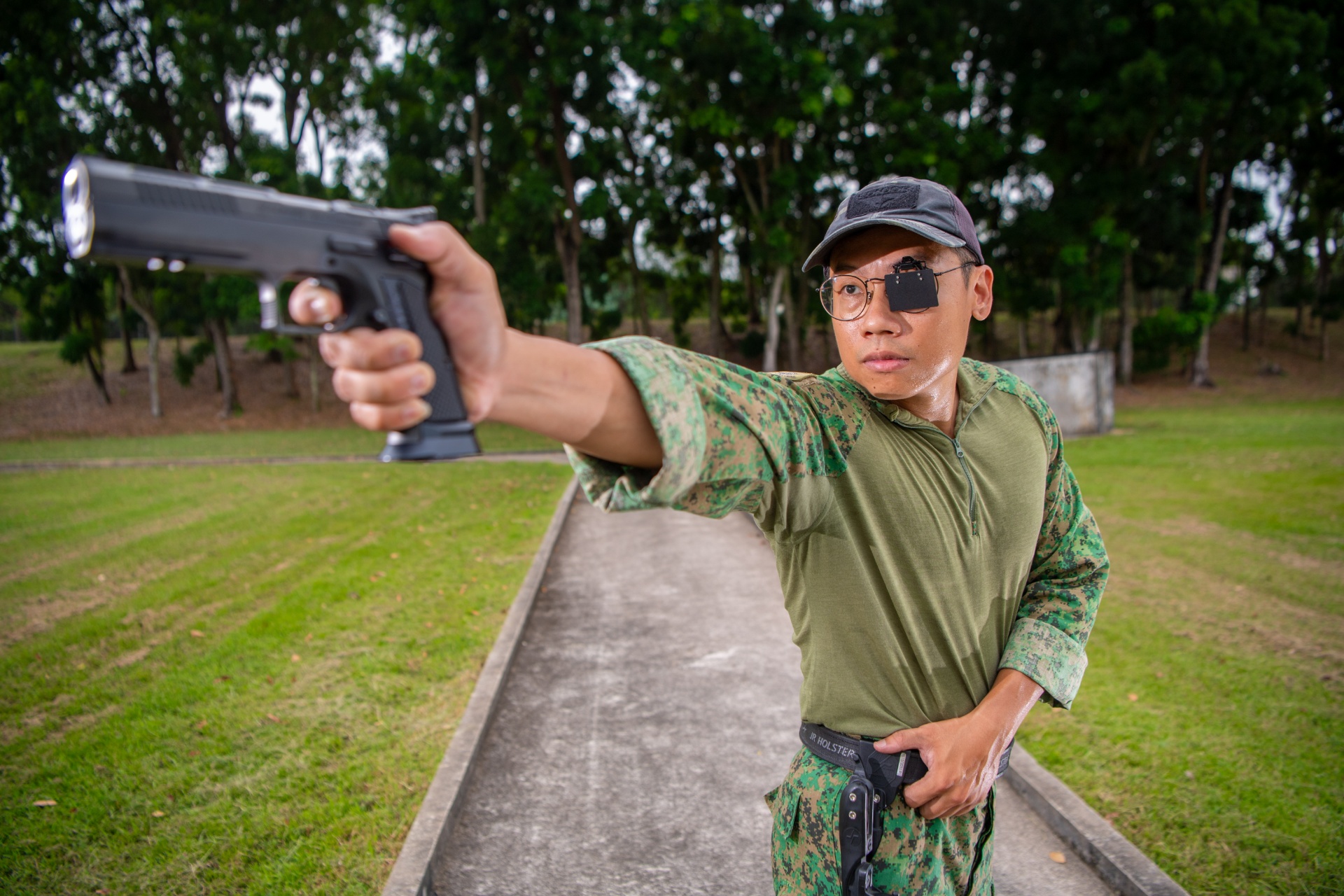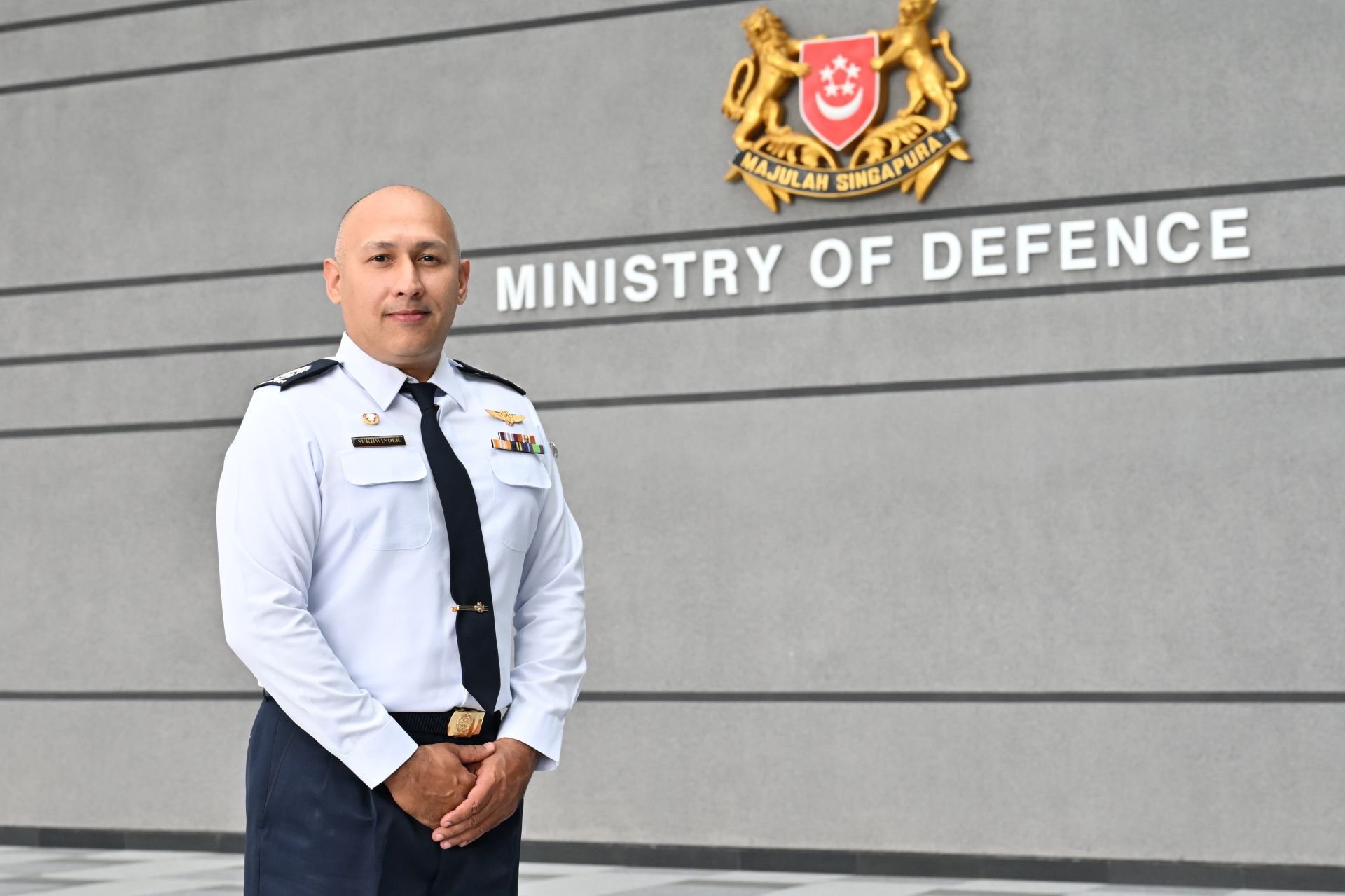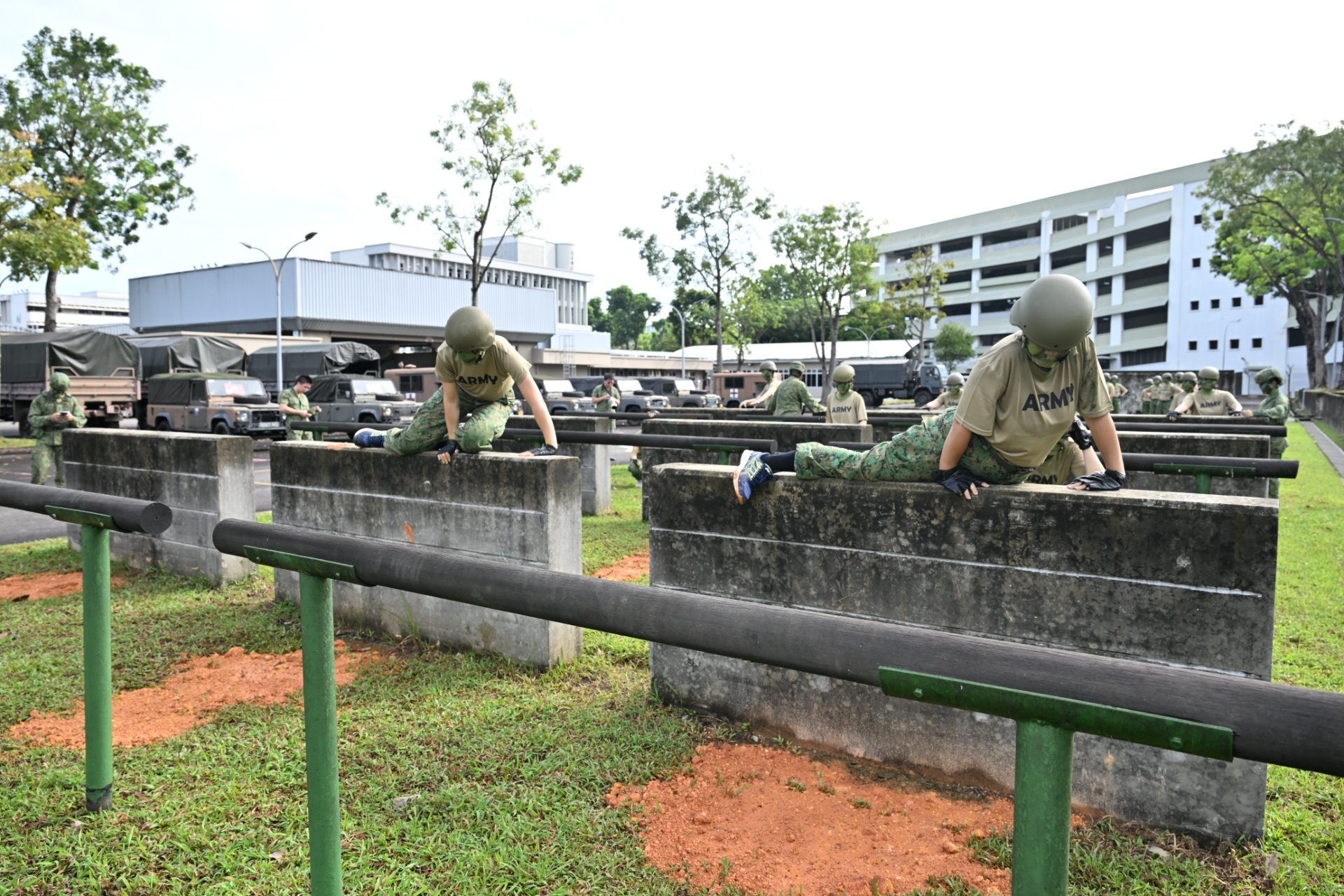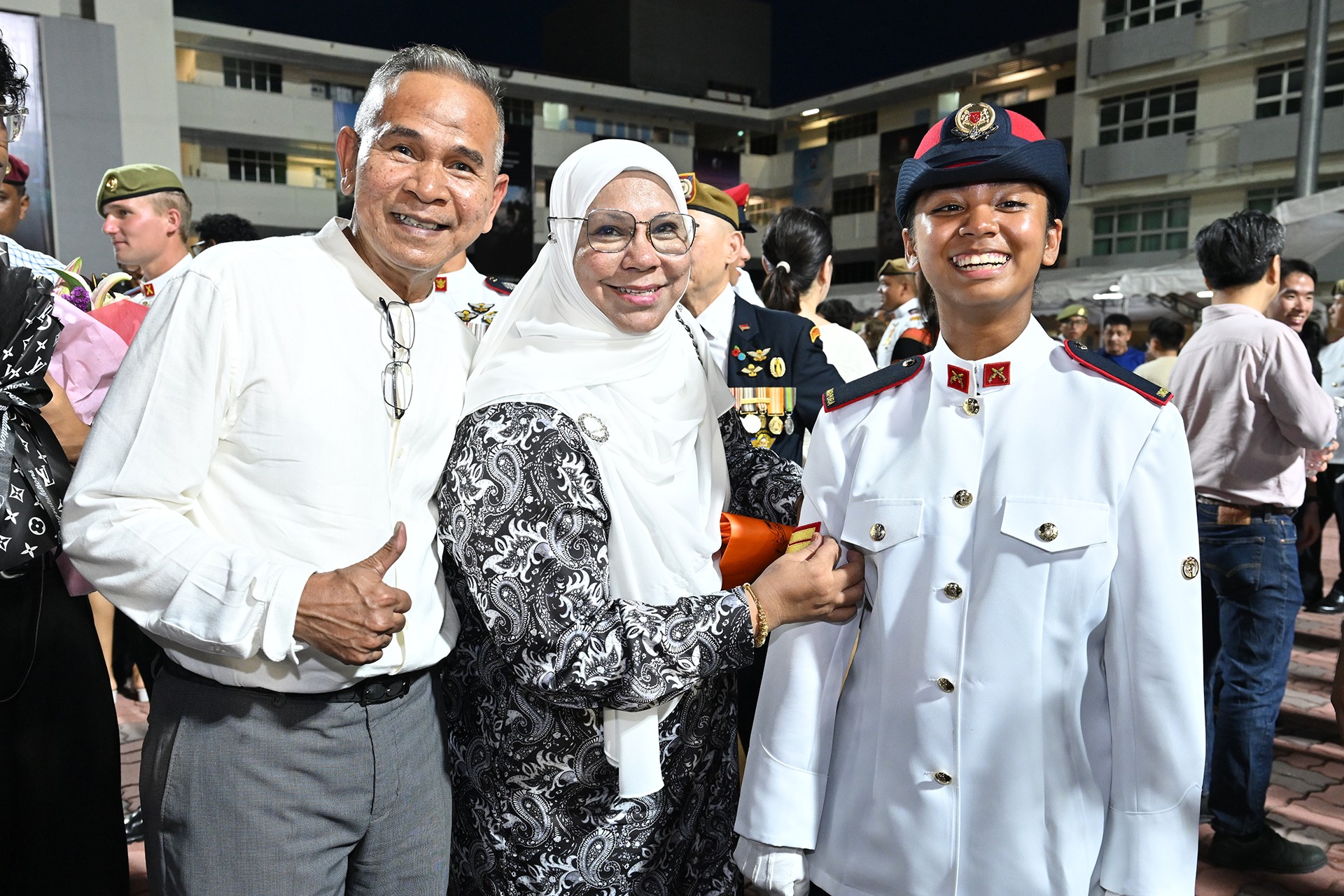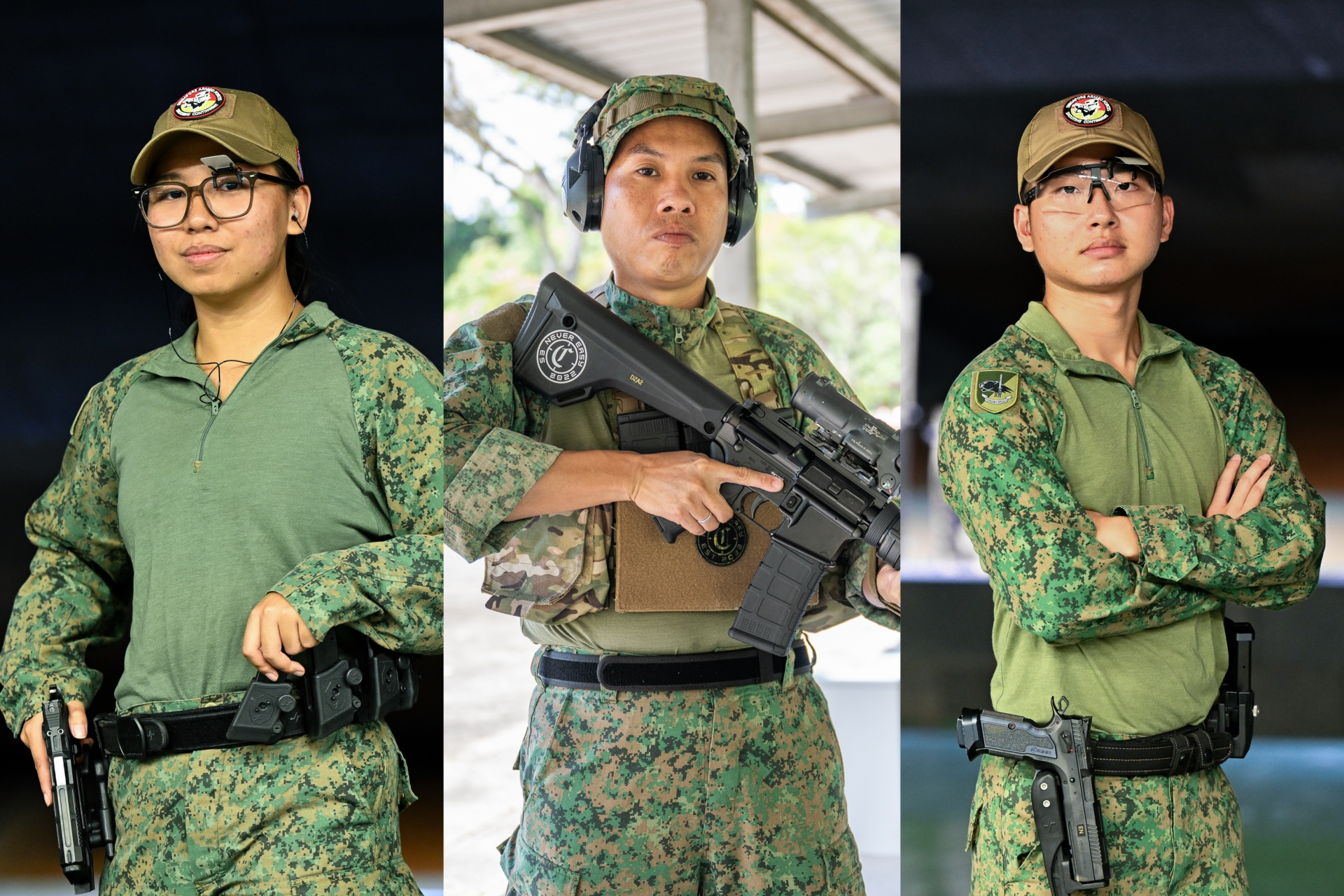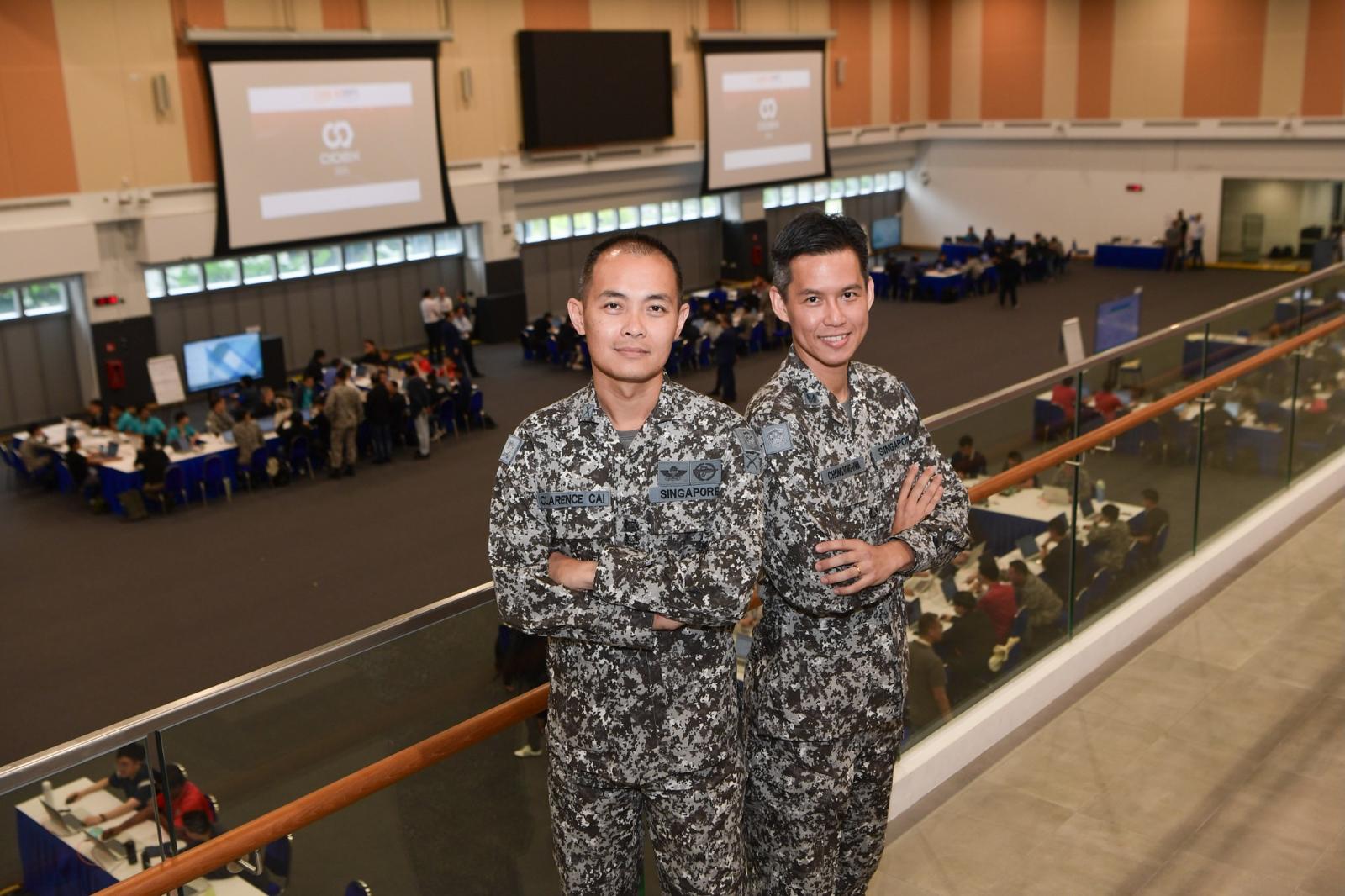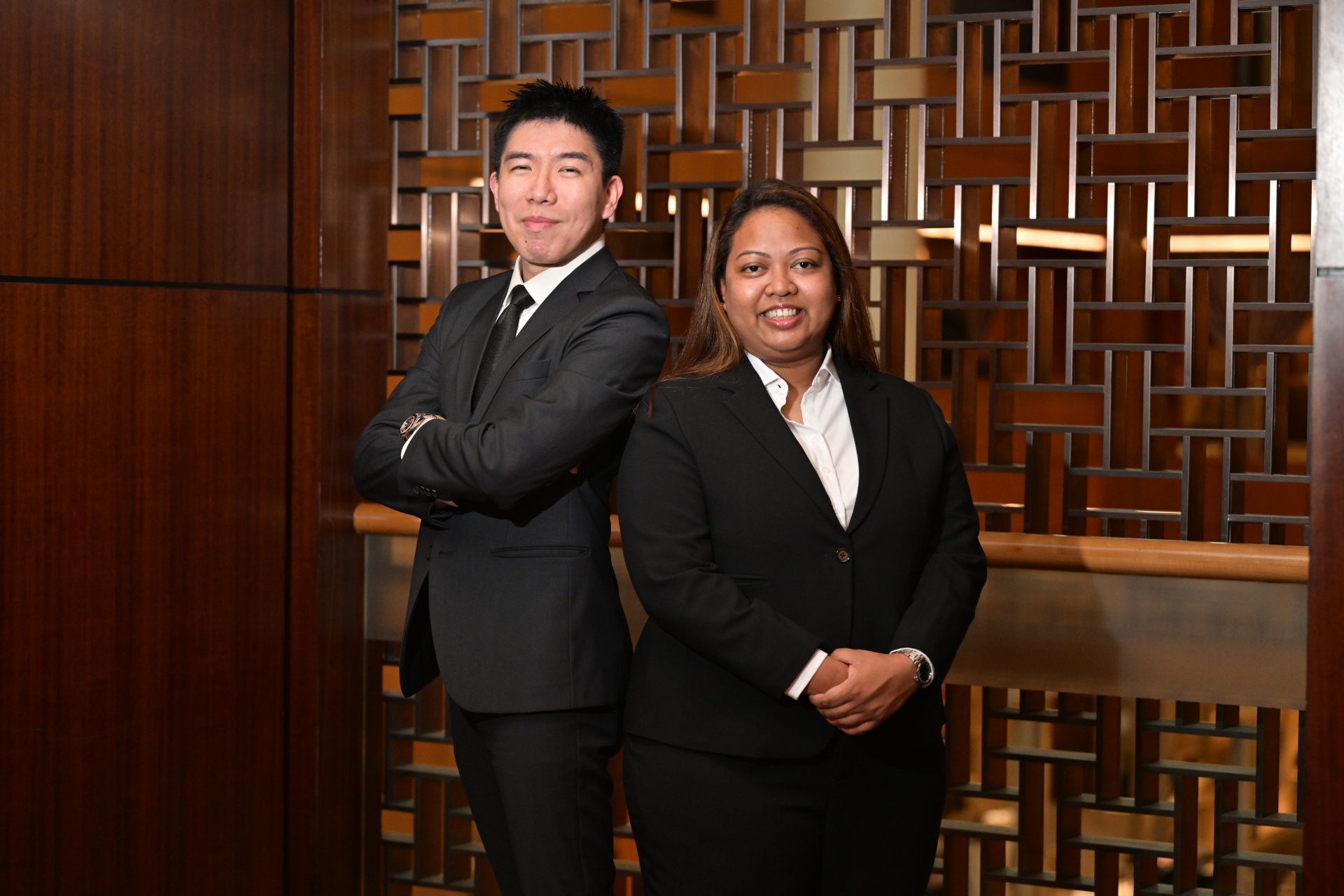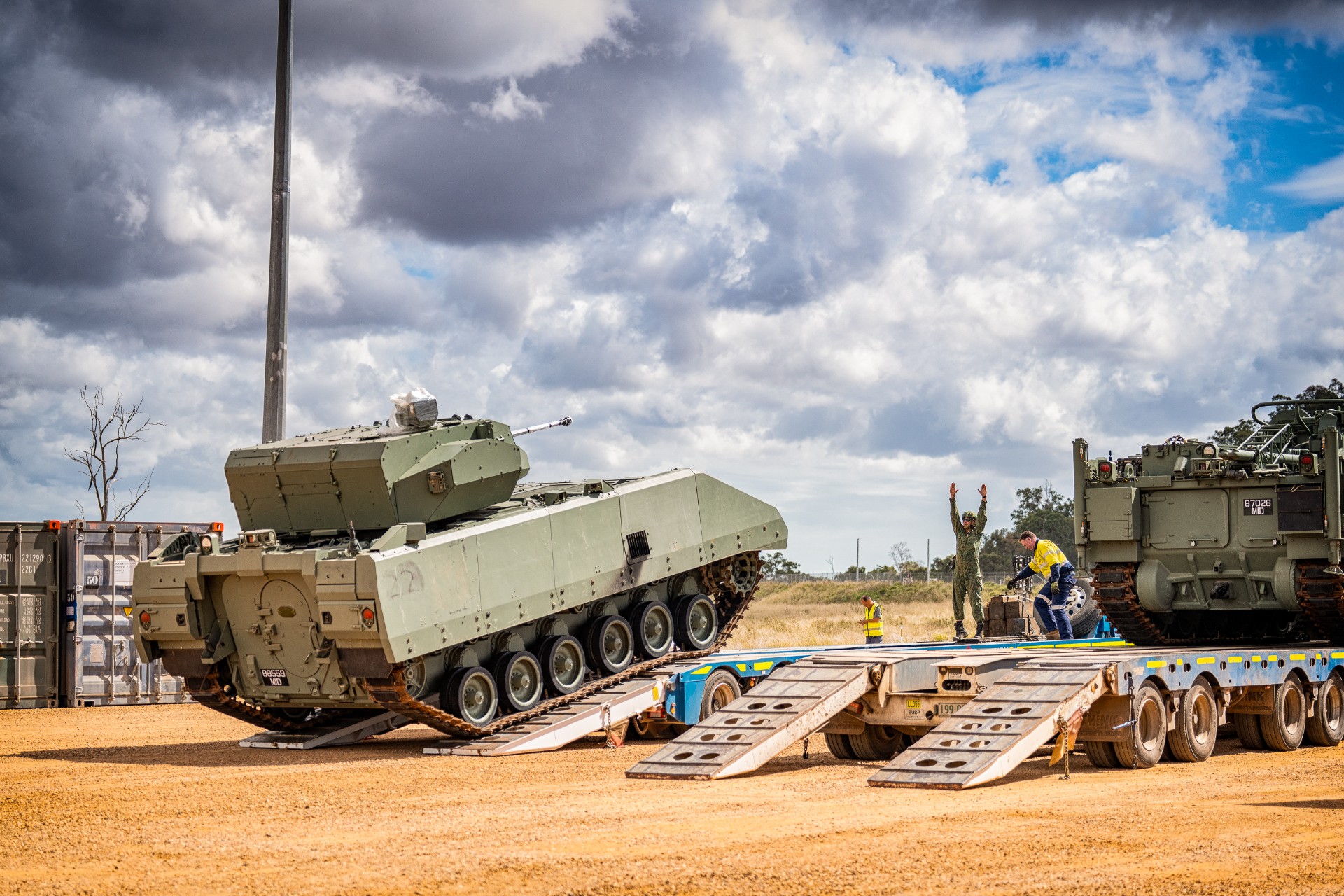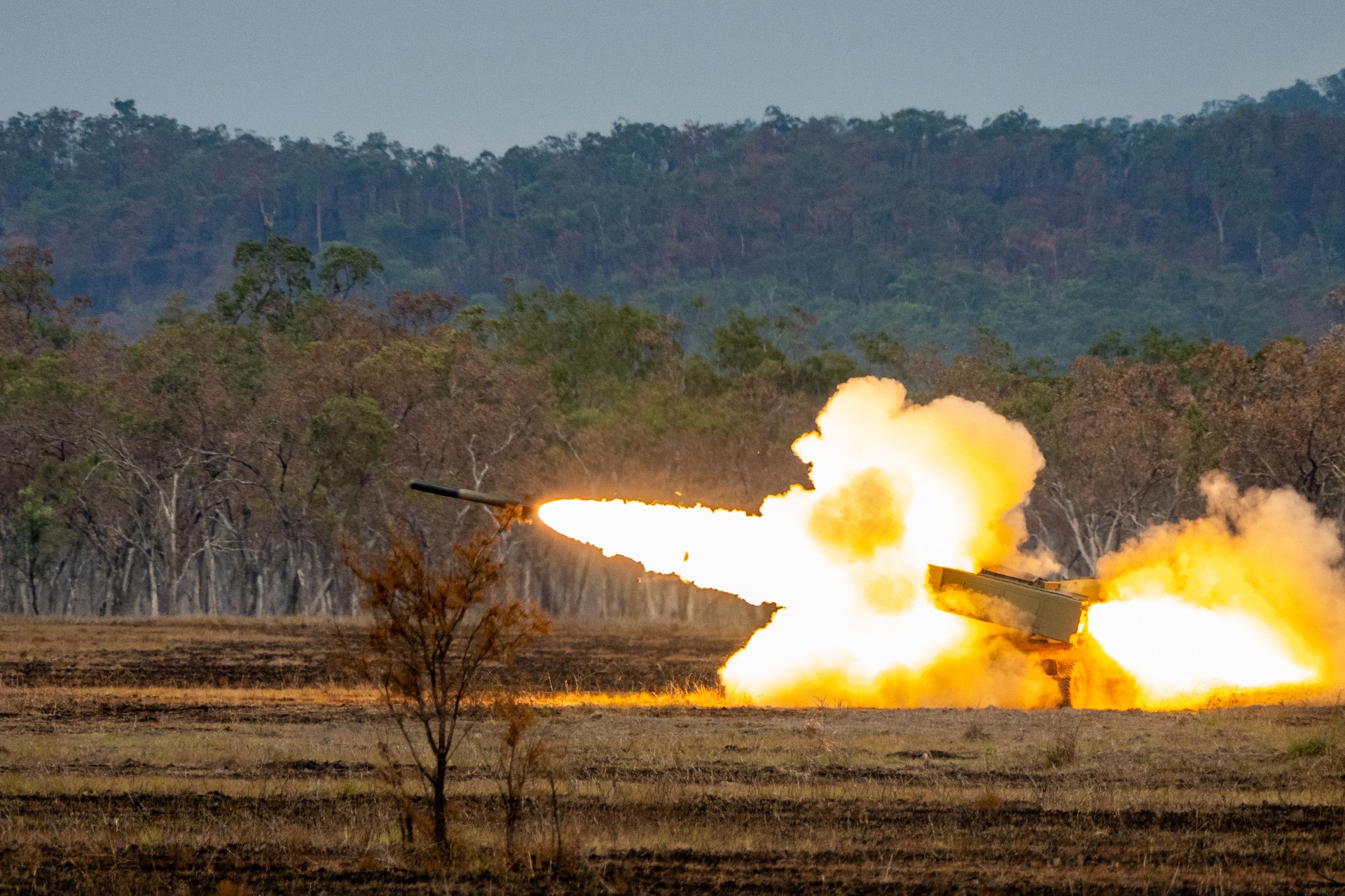THE BRAINS BEHIND DEFENCE
PHOTO // PIONEER Photographers & Courtesy of DSTA
Defence is not just about putting boots on the ground - scientists and engineers also play an important role in giving soldiers that extra edge.
It's easy for any military to buy a weapon system from the defence industry. But if everyone is able to own the same piece of hardware, how do you gain an edge over others?
The Singapore Armed Forces (SAF) counts on a team of capable defence engineers and scientists to gain this edge.
Over the years, they have helped to procure suitable military assets and gear, and even enhanced them to better suit the SAF's operational requirements. If something completely different is needed, the defence technology community is able to conceptualise and build it from scratch.
Their contributions extend beyond the military sphere. For example, during the 2003 Severe Acute Respiratory Syndrome (SARS) crisis, they developed a mass fever screening system, and conducted tests for the deadly virus.
PIONEER takes you behind the scenes to see how our defence engineers and scientists have contributed to the SAF and Singapore in recent years.
Mr Tng was part of the DSTA team of engineers who had to think of innovative solutions to maximise the potential of the LMV with a leaner crew.
Faster, smarter, leaner ship
The brief
The Republic of Singapore Navy (RSN) needs a bigger and more capable ship to replace its ageing 20-year-old Fearless-class Patrol Vessel. in view of declining birth rates in Singapore, the new ship has to be manned by a leaner crew.
The challenge
How do you build a ship that is two-and-a-half times bigger, but can be manned by a crew that is a quarter smaller?
When Defence Science and Technology Agency (DSTA) engineers received the brief to design the Littoral Mission Vessels (LMVs), they knew that an out-of-the-box solution was needed. Instead of making small, incremental changes, they decided to radically change the way sailors operate a ship.
Traditionally, a group navigates the ship in the bridge, while the command team helms the weapon systems in the combat information centre, and the engineers work in the machinery control room.
DSTA's idea was to house these three functions together in an integrated command centre. By putting them in one common space, we hoped that the sailors would gain synergy through teamwork, and reduce redundant roles and tasks, said Mr Tng Yan Siong, 40. The DSTA engineer was in charge of integrating the LMV's various weapon and communication systems.
Simulation trial
But would it work in reality? Short of building a real ship, the only way to find out was through a simulation trial. The engineers created a replica of the integrated command centre in an analytical laboratory, where two teams of crew were put through mission scenarios such as patrol and counter-piracy, in varying weather conditions and sea states.
The test facility came with all-round windows (simulated by large LCD screens) just like in a real ship. It provided the crew with a 360-degree view of the ship's surroundings as if they were out at sea.
A key objective was to see how a leaner crew would affect the ship's performance. Whenever you cut manpower, there are worries about whether the smaller crew can cope with operations, explained Mr Tng.
DSTA engineers conducted extensive interviews with the crew, and performed data analysis to come up with the optimal workload for each role. With the results, they were able to tailor the design of the LMV according to the needs of the crew.
Navy crew undergoing trials at the DSTA Analytical Laboratory - a replica of the integrated command centre - to validate the new operating concept before construction of the LMV began.
Designed for the users
Automation is used extensively to reduce workload. For example, an all-round electro-optical surveillance system in the integrated command centre allows sailors to monitor the seas all around them on screen.
Traditionally, sailors on watch duty have to constantly scan the sea using binoculars. This smart system, however, alerts the crew automatically if a vessel is nearing the ship.
Training and logistics support are also simplified. The 80m-long warship's vital signs (such as the operating temperature of its engines and the operating status of its communication systems) are monitored remotely by crew with onboard cameras and sensors. The status of its systems can be transmitted wirelessly to shore, to facilitate pre-emptive maintenance work.
Another feature is the warship's hi-tech consoles which come with touchscreens and an intuitive interface. Since the next generation of sailors are likely to be familiar with devices like the iPad, having touchscreen consoles will reduce training time.
"It's not just about the vessel's fighting capability, but also about (enhancing) training and logistics, which helps to reduce the number of people needed to support the ship," Mr Tng explained.
DSTA also developed the Combat Management System (CMS), an advanced command and control system that acts like the "brain" of the warship to integrate the many sensors and weapons on board. Decision support engines were developed together with DSO National Laboratories (DSO) to give commanders options based on various situations. The Threat Evaluation and Weapon Assignment engine in the CMS, for instance, helps to determine the threat level of targets and assign the most suitable weapon to engage them. This simplifies the decision-making process so that a smaller crew is required to man the combat systems.
Construction of the LMV by Singapore Technologies (ST) Marine began in 2013. The first LMV, Independence, was launched on 3 Jul. A total of eight LMVs, including Independence, will be built. Independence is expected to be fully operational by 2017, and all eight LMVs fully operational by 2020.
Smarter ship
1. The integrated command centre - which houses the bridge, combat information centre, and machinery control room - enables greater synergy among different functions.
2. The bridge comes with windows on all sides to provide an all-round view of the ship's immediate surroundings.
3. An all-round electro-optical surveillance system allows sailors to monitor the sea on screen.
4. The 80m-long warship's vital signs are monitored remotely by crew with onboard cameras and sensors.
5. The status of its systems can be transmitted wirelessly to shore, to facilitate pre-emptive maintenance work.
6. The warship's consoles come with touchscreens that have an intuitive interface.
"We cut unnecessary tasks, make existing tasks easier, and streamline processes." - Mr Tng on why the LMV can be operated with a lean crew
The Terrex is no off-the-shelf battlefield troop carrier - the team behind it, including Mr Sunil, introduced new features such as the ?closed-hatch driving capability.
Commanders can engage the enemy by pressing a button, or call for reinforcements through the BMS.
Battlefield transporter
The brief
Three-tonners offer limited protection for infantry soldiers. And the troops still need to walk for hours before they reach their objective. The Army needs an armoured vehicle that can protect and rapidly transport troops straight to the battlefield.
The challenge
The brief seemed simple enough, but the team of defence engineers from DSTA hit a snag from the start. Most military vehicles require a soldier to operate a machine gun at the top, and there were no infantry carrier vehicles that allowed troops to fight "closed-hatch" effectively.
"We needed something more, and thought that maybe we could have a suite of cameras around the vehicle to give us this closed-hatch driving and all-round surveillance capability," said Mr Sunil Sadanandan, 47, who managed the acquisition programme of the Terrex.
Launched in 2009, the Terrex Infantry Carrier Vehicle was then one of the world's first combat vehicles to have a drive-by-camera system. Eleven cameras, including a thermal imaging camera, are mounted around the vehicle to provide situational awareness and drive-by-night capability. Two cameras mounted on the Remote Control Weapons System (which can be armed with a machine gun or a grenade launcher) allow soldiers to take aim and fire from inside the vehicle
The Terrex can ferry up to 13 soldiers, and travel across rugged terrain at a top speed of 105kmh.
A joint project between DSTA and defence contractor ST Kinetics, the first Terrex was delivered to the SAF just two-and-a-half years after the contract was finalised - extremely fast by international industry standards.
More amazing is the slew of integrated fighting capabilities that Mr Sunil and his team of engineers put into the vehicle.
Using acoustic technology, the Terrex's weapon detection system can pick out shots and show the enemy's location on the Battlefield Management System (BMS). And with the press of a button, the vehicle's Remote Control Weapons System will take out the enemy. If necessary, the commander can call for reinforcements through the BMS, which is linked to Headquarters as well as other SAF assets.
This integrated capability was not something that could be bought off the shelves. DSTA engineers had to integrate various systems from different suppliers.
Some systems were also enhanced by DSTA engineers. The original weapon detection system, for instance, was not able to differentiate between friendly and enemy fire. Working with the equipment manufacturer, DSTA engineers developed a way to "mask" out shots fired from friendly forces nearby.
The enhanced weapon detection system can also discern the calibre of the incoming fire. If a Terrex is under siege from machine-gun fire and a Rocket Propelled Grenade (RPG) attack simultaneously, the commander can identify and take out the RPG which is the more pressing threat.
"In the market, you can buy a weapon detection system, a remote control weapons system, and a BMS. But to integrate them - that's what makes us unique," said Mr Sunil.
Mr Quek and his team customised the H-450 to better operate in Singapore's humid climate.
Eyes of the skies
The brief
The Republic of Singapore Air Force (RSAF) needs an unmanned aerial vehicle (UAV) that can last longer, and capture sharper surveillance pictures. ensure the suitablity of purchasing the Hermes 450 (H-450), an advanced UAV produced by foreign defence company Elbit.
The challenge
Defence planners from the Ministry of Defence identified the H-450 as a UAV that could meet the SAF's operational needs and longer endurance of up to 14 hours, better avionics, and advanced sensors that can capture sharper air photos and videos.
However, there were questions about its suitability for local operations, so DSTA engineers ran tests and customised the new UAV for Singapore's climate.
They waterproofed the ground control station with better sealing material. The station is a facility where a two-man team operates the H-450. Originally designed for operations in dry climates, it experienced water seepage during heavy downpours.
Working with manufacturers, the engineers introduced a self-lubricating engine fan which helped to prevent overheating.
Extensive tests were conducted to ensure that, should there be a loss of communication, the H-450 could automatically fly back to base on a pre-programmed flight path over Singapore's congested airspace.
In the initial test phase, the engineers encountered system failures and faults. But they worked closely with their Air Force counterparts to iron out the issues.
"With every test flight, we learned something new and discovered areas in the system we could improve on," recalled Mr Quek Tze Wei, 36, one of 15 defence engineers in the team.
"Through the trials, we were able to enhance the system's robustness."
The first H-450 was delivered to the RSAF in 2007, and declared fully operational in March this year.
Dr Tan (far left) and her researchers are on 24/7 standby for any emergency involving biological agents.
A defence researcher working on a virus sample in the BSL-3 laboratory.
Defence against biological threats
After the 9/11 terrorist attack in 2001, anonymous letters laced with deadly anthrax spores killed five people, and infected 17 in the United States. Over in Singapore, there were more than 25 cases of anthrax scares.
Thankfully, defence researchers from DSO's Biological Defence Programme stood ready to test the suspicious items for anthrax. They had the technical know-how, and operated from a biosafety laboratory that could handle dangerous biological agents.
Although all the cases turned out to be hoaxes, the episode showed that Singapore was not immune to biological threats.
And in 2004, DSO added another biosafety laboratory that was bigger and better equipped with sophisticated research tools.
These two laboratories are rated at Bio Safety Level (BSL)-3. The highest level of bio-containment measures are designated BSL-4. The researchers are on 24/7 standby, and can be ready for operations within two hours.
Over the years, DSO defence researchers have been called upon to lend their expertise in times of crisis: the outbreak of SARS in 2003, swine flu in 2009, avian flu in 2013, and Ebola in 2015.
The most challenging case was the SARS outbreak in Singapore which infected 238 people, 33 of whom died. Among the dead were five medical staff. The mysterious disease then had no cure.
"I was worried because I didn't want my staff to come down with any infection. I was scared too, but it was important for me to keep up staff morale," recalled Dr Tan Boon Huan, Director of DSO's Biological Defence Programme, who was then a lead researcher.
To guide new defence researchers on how to handle future emergencies, they turned the SARS experience and the 9/11 anthrax scare into case studies.
Moving forward, the Biological Defence Programme is looking at developing treatment methods to strengthen Singapore's defences against infectious diseases.
"What do you do after you detect the virus or bacteria? You can quarantine the patient to stop the spread, but without treatment, the patient will die, explained Dr Tan.
Fever screener
Did you know that a fever screening tool developed by our defence engineers was one of Time Magazine's Best Inventions in 2003?
The device was Singapore's first line of defence against the deadly SARS virus. It came about when the Ministry of Health requested DSTA's help to develop a sensor-based fever screening device that could measure the body temperature of a large group of travellers.
One of the earliest and clearest symptoms of SARS was high fever. But using a clinical thermometer was tedious: It took six nurses more than 15 minutes to check the temperature of 150 travellers.
In less than 36 hours, DSTA sensor experts, with support from ST Electronics, cobbled up a basic prototype of the Infrared Fever Screening System, and set it up for trials at Singapore General Hospital (SGH).
The trials were successful and just a week after its conceptualisation, the system was deployed at Changi Airport.
The system shows instantly whether a person is running a temperature. It produces a colour-coded thermograph of each passerby: Red means hot, green means not.
Only two people were required to operate the system. This allowed most of the nurses on duty at Changi Airport to return to the hospitals where resources were stretched in the fight against SARS.
The thermal scanners soon caught the attention of other countries, and were loaned to Hong Kong, which was one of the worst-hit locations.
The infrared fever screening system was the country's first line of defence against the deadly SARS virus.
Braving danger
During the trials at SGH, the team came face to face with patients who could potentially be carrying the deadly virus. But they were aware of their heavy responsibilities and remained focused.
"We braved the circumstances and continued with our work, while adhering to a strict safety code," recalled Mr Tan Yang How, a defence engineer, and president of DSTA Academy. "We knew we could do something to help contain the SARS virus, and we wanted to do our best for our nation and our families."
Scientists at the verification laboratory such as Ms Ang can be mobilised in two hours in times of crisis.
Building up chemical defence
In the late 1980s, Saddam Hussein unleashed chemical weapons during the Iran-Iraq war, decades after chemical weapons were last used in conflicts.
The re-emergence of chemical warfare prompted DSO to build up its chemical defence capabilities in 1989.
One key capability is its verification laboratory. Set up in 1996, the facility can screen for hundreds of deadly chemical agents such as sarin and sulphur mustard. The former was used in the infamous 1995 Tokyo subway attack. A similar attack in densely populated Singapore would be devastating.
In the event of a chemical attack, units from the SAF s Chemical, Biological, Radiological and Explosive Defence Group will bring a sample to the verification laboratory for testing.
The defence scientists are on standby whenever Singapore hosts large-scale events such as the National Day Parade (NDP). The laboratory is currently exploring providing 24/7 support, and conducting drills with the SAF.
"Our laboratory can be called upon to provide 24/7 support. Our people can be mobilised in two hours when activated during standby, and our equipment is in good condition, ready for testing, said Ms Ang Lee Hwi, a chemical defence scientist.
World-class facilities
DSO's verification laboratory is one of 19 such laboratories in the world, and the only one in Southeast Asia, that are designated by the Organisation for the Prohibition of Chemical Weapons (OPCW). This is an independent organisation that works to prevent the use and emergence of chemical weapons, including on-site inspections of member states.
As an OPCW-designated facility, DSO's verification laboratory has been called upon to analyse samples collected from inspections. This is an affirmation that DSO's verification laboratory is world-class. DSO defence scientists took part in 10 tests over seven years before getting its status as an OPCW Designated Laboratory in 2003.
Said Ms Ang: "Test results from our lab can be used in an international court for trials on the alleged use of chemical weapons. That's why we need to be very thorough and meticulous, and that's why the OPCW proficiency test is extremely stringent."
DSTA engineers took only 13 months to construct the world's largest floating platform.
World's largest floating stage
Local defence engineers are a versatile bunch. Not only are they adept at designing military gear, they also constructed the world's largest floating stage - the Marina Bay Floating Platform.
Slightly bigger than a football field, the 120m-by-83m platform can take the weight of 9,000 performers, 200 tonnes of stage props, and three 30-tonne vehicles. DSTA partnered SembCorp Marine to complete it in just 13 months after conceptualisation.
The idea for a floating stage was first mooted in 2005. As the old National Stadium was to be demolished in 2007, a few years before the Singapore Sports Hub would be ready, NDP organisers needed a temporary venue.
It took engineers with bold vision and technical expertise to make the floating platform a reality. Back then, there were not many such large floating platforms in the world. As there were a few in Japan, DSTA engineers conducted feasibility studies and travelled to Japan to learn how they did it.
The platform is made up of 15 steel pontoons held together by design-patented connectors, and can be reconfigured to suit different mass spectator events.
One of the problems the engineers faced was keeping the platform stable on water. Back then, there was no Marina Barrage to keep the sea waters out. To secure the floating platform, they turned to a detachable dolphin mooring system which restricted the platform so that it would only move with the waves vertically.
Since 2007, the platform has staged seven NDPs, as well as the opening and closing ceremonies of the Singapore Youth Olympics 2010. DSTA engineer Lim Yoke Beng is proud to have played his part in developing the platform. "It gives me a great sense of satisfaction to see the many events and activities taking place on it. To watch my son graduate from his Basic Military Training in 2011 on this same platform I helped to develop was a moving and proud moment for me too."
Inspiring young minds
The search for talent is never easy. To groom the next generation of defence scientists and engineers, DSO and DSTA jointly organise the Young Defence Scientists Programme (YDSP), which has cultivated students interest in defence science and technology through research programmes, science camps, scholarships and academic awards for over 20 years.
In Research@YDSP, for instance, students spend between six and nine months working on defence-related projects, alongside experienced defence engineers and scientists, in a sophisticated research laboratory environment. To date, the programme has encouraged the spirit of innovation and discovery in more than 1,000 students.
Nurturing future talent
Cyber security events are a hit with Information Technology enthusiasts and professionals worldwide. However, few are targeted at students with little or no background in cyber security.
In Singapore, DSTA
